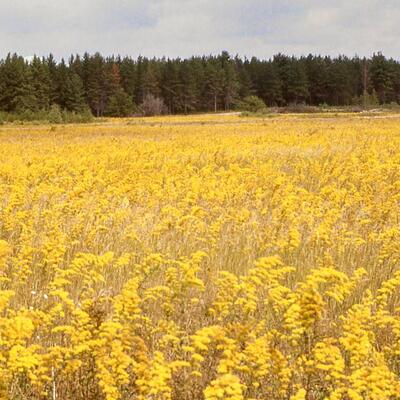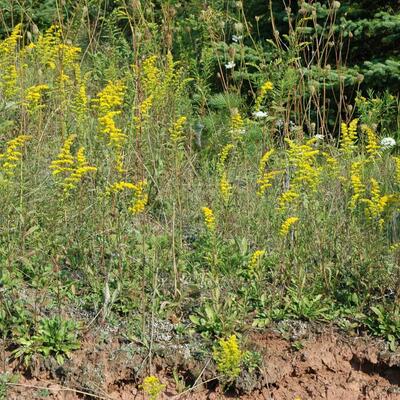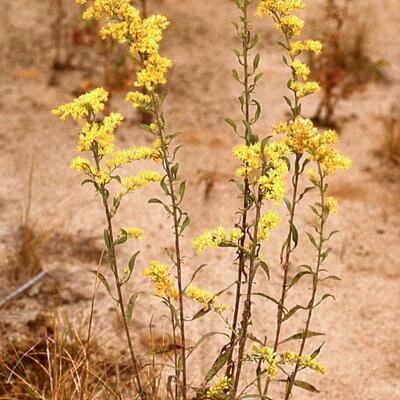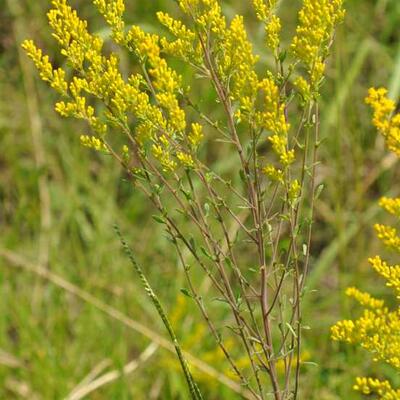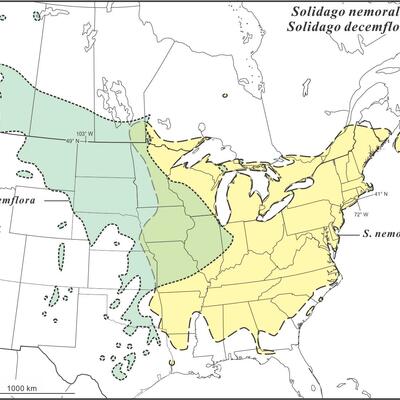Department of Biology
ESC 350
200 University Ave. W
Waterloo, Ontario, Canada N2L 3G1
Phone: (519) 888-4567 ext. 32569
Fax: (519) 746-0614
Eastern Gray-stemmed Goldenrod
Solidago nemoralis in the strict sense is native to disturbed sand and gravel soils of roadsides, fields and opening in the eastern deciduous forest. As defined here, S. nemoralis only includes what was treated as S. nemoralis subsp. nemoralis in Flora North America (Semple & Cook 2006). Semple & Beck (2021) opted to treat subsp. decemflora as S. decemflora. The common name refers to the numerous soft short strigose hairs occurring on the stems and leaves of S. nemoralis, S. decemflora, and S. nana.
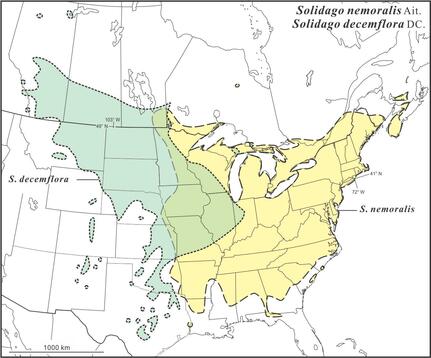
Solidago nemoralis is a mostly diploid species distinguished by the following set of traits: Pappus bristles usually not or barely exceeding ray floret corolla tubes and bases of disc floret lobes; disc corolla lobes 0.5–0.9(–1) mm; involucres usually 2.6–4.2 mm (tetraploids have larger heads); cypselae usually only sparsely strigose; basal leaves usually crenate, oblanceolate to obovate (as subsp. nemoralis in Semple & Cook 2006 FNA). Solidago nemoralis var. haleana Fernald is a synonym proposed for taller plants with inflorescences with elongated lower branches; these occur in the southeastern U.S. but are likely just a growth form resulting from longer growing seasons. In a multivariate study, plants of "var. haleana" did not separate from other plants of ssp. nemoralis (Semple et al. 1990).
Solidago nemoralis is related to S. decemflora and S. nana, the other two species included in S. subg. Nemorales (Semple & Beck 2021). Solidago nemoralis in the broad sensu including S. decemflora was included in a second multivariate study (Semple et al. 2018) that included species now placed in S. subsect. Radulae of S. subg. Pleiactila (Semple & Beck 2021).
There are a few scattered populations of tetraploids 2n=36 that are likely of multiple origins (Brammall & Semple 1990); these could be distinguished from diploid 2n=18 plants on characters that are influenced by ploidy level. Tetraploid S. nemoralis grouped with diploid ssp. nemoralis, not with tetraploid ssp. decemflora in the 1990 study.
Solidago nemoralis subsp. nemoralis, glacial outwash sand plains in eastern Ontario
Solidago nemoralis, habitat, Prince Edward Island
Solidago nemoralis, Ontario
Soliddago nemoralis "haleana" inflorescence morph, Tennessee
Brammall, R. A., and J.C. Semple. 1990. The cytotaxonomy of Solidago nemoralis (Compositae: Astereae). Can. J. Bot. 68: 2065-2069.
Semple, J.C., J.G. Chmielewski, and R. A. Brammall. 1990. A multivariate morphometric study of Solidago nemoralis (Compositae: Astereae) and comparison with S. californica and S. sparsiflora. Can. J. Bot. 68: 2070-2082.
Semple, J.C., K. Kornobis, and S. Bzovsky. 2018. A multivariate morphometric analysis of Solidago subsect. Nemorales (Asteraceae: Astereae). Phytoneuron 2018-42: 1–40.
Semple, J.C. and J.B. Beck. 2021. A revised infrageneric classification of Solidago (Asteraceae: Astereae). Phytoneuron 2021-10. 1-6.
Last updated 4 June 2023 by J.C. Semple
© 2023 J.C. Semple, including all photographs unless otherwise indicated
